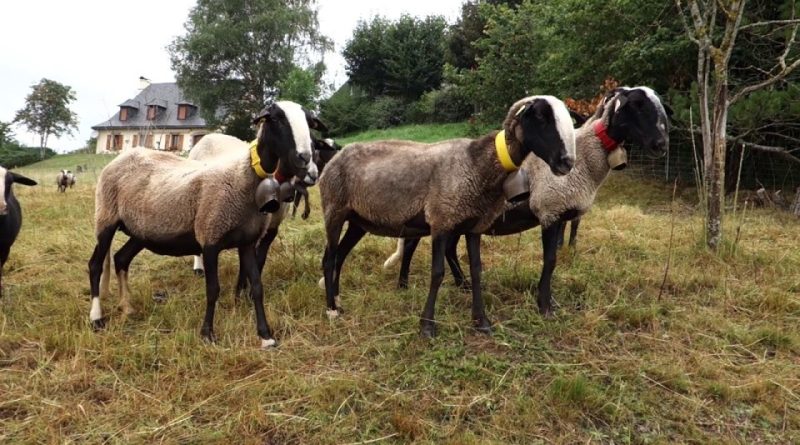Bizet
Bizet
Bizet is a sheep (Ovis aries Linnaeus, 1758) of French origin, with a main aptitude for meat production.
Systematics –
From a systematic point of view it belongs to:
Eukaryota Domain,
Kingdom Animalia,
Phylum Chordata,
Mammalia class,
Order Artiodactyla,
Suborder Ruminantia,
Bovidae family,
Caprinae subfamily,
Genus Ovis,
Species O. aries,
Bizet breed.
Geographic and Area Distribution –
The Bizet sheep breed is a sheep breed originating from France, where it is bred mainly for the production of meat and secondarily for wool.
Despite a recent demographic decline, the Bizet breed has had a certain development in its geographical area. Initially it was concentrated in its area of origin between the department of Cantal and the Haute-Loire, where in the years 1945 it constituted almost half of the livestock; over time it spread to Aveyron, Aude, Drôme and even Herault. In 1948 the Bizet breed also established itself in the archipelago of the Kerguelen islands (south of the Indian Ocean) where, in the face of extremely difficult living conditions, it adapted and developed to reach a population of about 1,000 sheep.
Origins and History –
The Bizet sheep breed comes from the group of sheep breeds of the Massif Central in which various branches would have specialized, the Bizet breed only stabilized at the beginning of the twentieth century. In the nineteenth century, between 1830 and 1900, the breed underwent various uncontrolled crossings with Caussenardes and then with English breeds (Southdown, Dishley, etc.); the crossings had the aim of improving its conformation, but, in fact, caused a drift in the standard and its attitudes. It was at the beginning of the 20th century (1905) that work was undertaken to stabilize the breed. In 1945 the work of selection was strengthened with the creation of the Herd Book.
Morphology –
Bizet is recognized for having a thin head with a curved nose.
The face is black with a white stripe covering the muzzle, muzzle, forehead and bun.
The mucous membranes are black with no bright spots, and their ears are black, rather short, thin and erect.
The male has fine spiral horns, quite developed, raised in volutes. The female, on the other hand, has no horns.
The limbs are fine and solid blacks, of which at least two have white frills which do not include the hock.
The fleece is creamy and leaves the head, throat and legs bare up to two thirds of the hock; the tail is thin at the tip and white in color.
Adult females weigh an average of 50 to 60 kg, while males weigh 80 to 95 kg.
The average height is 75 cm for females and 80 cm for males.
Productive attitude –
The Bizet sheep breed has a good flexibility of use, both in terms of its food needs and in terms of management.
It has a very sociable behavior towards the man which facilitates the management of the herd.
Its main production attitude is that of meat production but its wool is also used.
It is a breed that adapts to different breeding systems: outdoors, transhumance or semi-open (sheepfold). Thanks to its flexibility in terms of reproduction it is perfectly suited to accelerated management (3 lambs in 2 years) which allows to increase the profitability of farms. Depending on the regions, periods and systems, the lambs are raised with grass or with integrated feed, or in sheepfolds: the lamb carcasses weigh between 16 and 18 kg. Crossing with meat breeds improves the conformation of slaughter lambs and reduces fattening times.
The meat of Bizet lambs has an exceptional flavor, much appreciated by gourmets: the story goes that King Louis XIV ate mutton but only Bizet.
The lambs from these farms are sold under various official quality brands or company brands such as: Agneau de l’Adret, Terre d´Agneaux, Grillonnet or Agneau Fermier des Pays d’Oc (Label Rouge).
Guido Bissanti
Sources-
– Wikipedia, the free encyclopedia.
– Daniele Bigi, Alessio Zanon, 2010. Atlas of native breeds. Cattle, horses, sheep and goats, pigs reared in Italy, Edagricole-New Business Media, Bologna.

